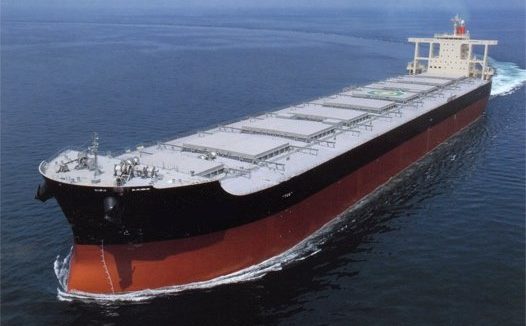BIMCO calls the end of the China iron ore cape run

After two decades of relying on Chinese demand for iron ore imports, cape owners today have been told they’ll need to wean themselves off this cash cow.
In a report entitled It’s the steel production, stupid!, BIMCO’s chief shipping analyst Peter Sand has called the end of the China iron ore cape run. The report notes how Chinese imports of iron ore keep falling, while the nation’s crude steel production keeps growing. This is down to greater use of scrap metal in the world’s most populous nation, Sand observed.
“China’s increased use of scrap metal for its production of crude steel is fundamentally critical to the dry bulk shipping industry,” the BIMCO report noted.
Chinese steel production grew by a massive 12.6m tonnes (+9.2%) in the first two months on 2019 as estimated by China Iron and Steel Association (CISA). During the same period, Chinese imports of the paramount steel production ingredient, iron ore, fell by 5.6%, or 10.3m tonnes.
“For two decades the dry bulk shipping industry have relied on growth in Chinese steel production to continuously spur seaborne imports of high-quality iron ore – from Australia and Brazil. That trend has now vanished and the capesize ships operating on the spot market feel the pain. Growth in volumes are gone and iron ore is increasingly being shipped on long term contracts,” Sand stated.
The 10.3m tonnes fall in Chinese iron ore imports is equal to 57 capesize loads fewer for the first two months of 2019.
“If that’s the pace we will see for the full year, we are in for a tough time,” Sand warned.
The BIMCO report noted how changes to the Chinese steel-making industry have pushed a move towards increased use of scrap metal, away from using imported and domestically mined iron ore blend into a solid amount of coking coal. China’s seaborne imports of coking coal fell by 11.2% (4.9m tonnes) in 2018, with the slide continuing into 2019. Chinese coking coal imports are down by 16% in the first two months of this year from the same period in 2018.
“This year, BIMCO is putting special focus on this decoupling between steel production and iron ore imports, as the mega driver for capesize transportation demand may not only disappoint, but worsen its fate,” Sand warned.
In a downbeat forecast, the BIMCO analyst concluded: “Looking forward, iron ore will no longer drive the capesize market up as it has been doing for two decades. Freight rates will become more negatively impacted by fleet growth than before, as demand is now falling, for the all-important capesize commodity.”
